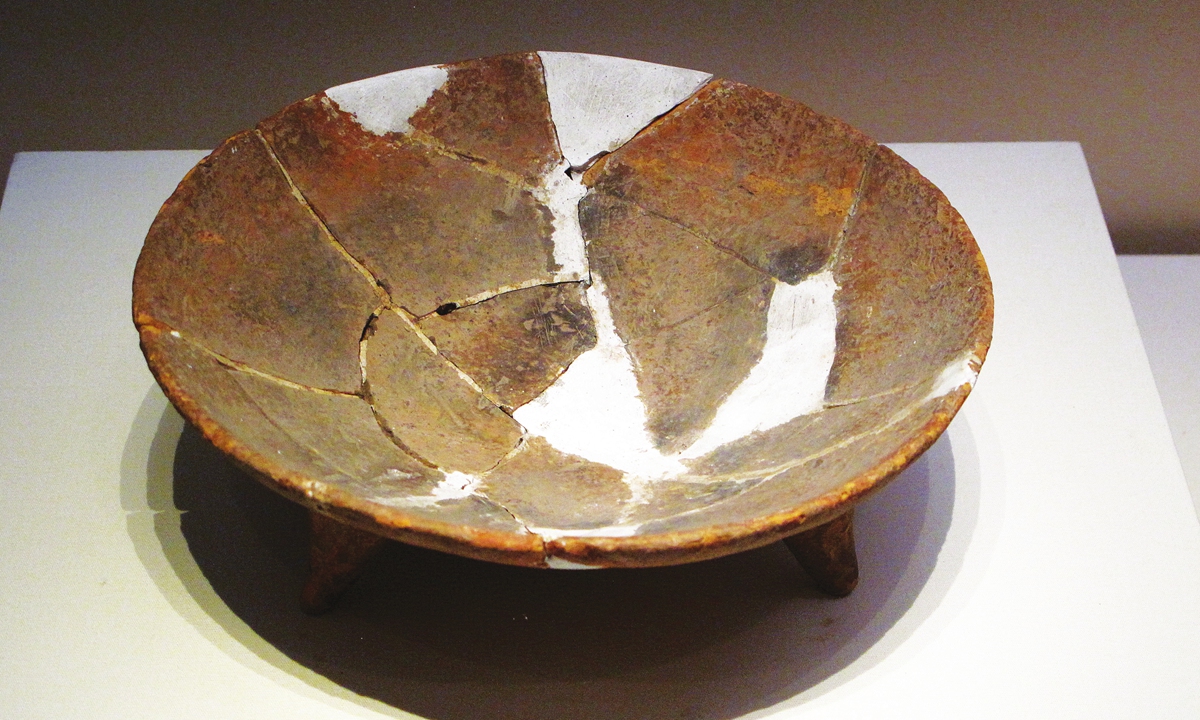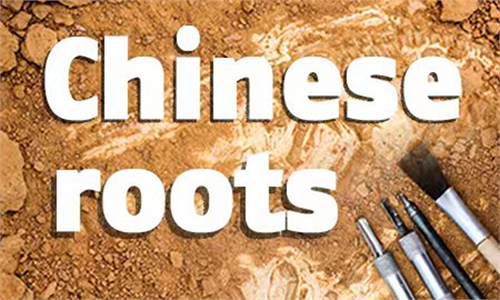
A piece of pottery from the Cishan Culture. Photo: IC
Located in northern part of China, the Cishan Culture is one of the origins of China's long civilization. It is famous for unearthed archaeological discoveries of grains, and carved jade, making it one of the most important early Neolithic cultural sites in the Chinese history.The culture is named after the village of Cishan, in North China's Hebei Province, where traces of the culture were first unearthed in 1972. A massive systematic excavation of the 140,000 square meter site was conducted between 1976 and 1978, and more than 6,000 relics ranging from pottery ware, stone tools, bone horns, animal bones and plant specimens were found.
Grains of proso millet (shu), one of the main grains grown and consumed by ancient Chinese in the north along the Yellow River, were discovered in the ruins. Dating back to 10,300 years ago, the grains pushed the history of millet planting in the Yellow River basin back to 10,000 years ago.
The remains of dog, pig, and chicken bones also showed that the people of the Cishan Culture had begun to raise poultry and livestock over 8,000 years ago.
In 2007, archaeologists found a carved jade at the site while conducting an environmental archaeology site sampling. After testing, the stone was determined to be 10,300 years old, pushing the use of jade in China backward by 2,000 years.
The discovery of the jade was something of an accident.
In October 2007, archaeologists from the Chinese Academy of Social Sciences and Chinese Academy of Sciences were taking samples to learn more about the environment in ancient times.
As visitors accompanied by the staff showed up to look at the inside of the ruins, the group accidentally found a piece of "pottery remains" that were heavier than the normal ones they found at the site.
As archaeologists cleaned the piece with bottled water, they discovered that it was actually an ancient piece of carved jade.
"The stone we found had clearly been carved with tools, so the possibility that this regular-shaped stone had naturally formed was excluded," archaeologist Zhang Haijiang told the China News Service. The scattered stone tools that were discovered around the jade also suggested that the location was a group living area for the ancient Cishan people.
Global Times

